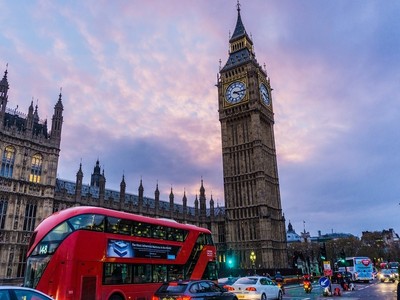Containment swiftly evolved into mitigation as the body count climbed and then the bailouts started. With manuals from the 2008 Global Financial Crisis, our central bankers were quick to replay the financial remedies that they learnt last time we were crushed through the mangle.
The great evil that the world’s politicians and central bankers all want to avoid is a deflationary depression. This is when people expect things to get cheaper so they stop buying. The idea quickly becomes self-fulfilling; as demand dries up, economic activity grinds to a standstill and those left standing are nailed by debt that they cannot afford to service, and so the downward spiral continues.
Interest rate cuts soften debt servicing and make it easier to buy assets or consumer goods and services. The Americans cut the Fed Funds rate (their central bank interest rate) to 0.25% on March 15th. Our own base rate was cut to 0.1% on March 19th. QE, or quantitative easing, is when central bankers create money in order to buy things and the advantage of central banks buying debt, is that the money used to buy the debt is repaid at some stage; so the money creation is not seen as a de-basing of the currency. The least controversial tool at their disposal is when central banks buy their own government’s debt. Central banks buying corporate bonds helps supply companies with money but risks the moral hazard of keeping alive zombie companies that should have naturally folded. Focussing on the investment grade space in the secondary market is probably the least hazardous approach. The Federal Reserve (US central bank) has been busy here, expanding its balance sheet by $2 trillion in five weeks; the previous $4.5 trillion peak of 2017 has now grown to $6.4 trillion.
Across the world, companies have also benefitted from grants, like the airline industry and government guaranteed loans. You can always lend money to a bankrupt business at nil interest rate, which is one reason why the US managed to move $350 billion of support in such short time.
Banks generally got a lift as well. Capital requirements were lowered, which is freeing up cash to, possibly, be lent out. They were told to build benign assumptions about defaults into their provisions and that the situation would be temporary. In America, banks were asked to act as agents for the Federal government’s assistance, whereas in the UK the banks still had to put skin in the game. Our 80% government guarantee is a shared loss, not the UK government taking the first 80% of loss.
Europe appears to be the odd one out with Germany wishing to limit any fiscal stimulus in opposition to their less thrifty Mediterranean cousins. The Germans do not want to encourage over-spending again in the future and the Italians have to learn not to irresponsibly rack up government deficits again!
Individuals were helped as well; the UK furlough scheme started on 20th April with the government paying 80% of salary costs up to £2,500 plus National Insurance, plus pension per person, per month. The Japanese government went one step further with helicopter money. Everybody in Japan received ¥100,000, which is about £600. The word “helicopter” is used to denote the idea of a helicopter flying over cities throwing freshly printed money out of the doors.
Thankfully, we are now seeing the signs of spring pushing away the viral winter. New infection cases can be seen to be stable or falling and the same for deaths, albeit with a lag. New York thinks it is past the high point of infection and Germany is allowing small shops to open. Last week Danish children went back to school and Norwegian smalls started kindergarten this week.
When the virus started, I built a hypothetical discounted cashflow model. This works on the idea that the value of an asset is all the cashflows that you get in the future, valued at what the future cashflows are worth today. Interest rates let you work out what money today is worth in the future, whereas discount rates let you work out what money in the future is worth today, or the so-called NPV, or Net Present Value. The larger the discount rate, the lower is the NPV. I worked in cuts to cashflows of 50% for 2020 and 25% for 2021 together with an increase in the discount rate of 2%, fading back to 8% over time. My model said expect a fall of 30%, which is what we have had. I think the likelihood of the market having troughed is high, but that is not to say that the low may not be revisited.
Going forward, we have to work out the true cost of the crisis, for it is that cost that determines the future. There are no free “get out of jail” cards in life; they only exist in the Chance cards on a Monopoly board. The idea that whenever we get into economic trouble, central bankers can just bail us out with low interest rates, QE and helicopters without cost is unrealistic. The cost of the post-Global Financial Crisis (GFC) QE support was a low growth world.
Now that infection rates appear to be stabilising, we may have vision of a trajectory that leads to an exit route. Progress from here can be determined by the constraints that are needed to stop the healthcare system being overwhelmed. This is ventilators, PPE and, hopefully at some stage, symptom alleviating medicine and / or a vaccine. As time progresses, so the medical capacity will increase and the speed of the climb out of COVID-19 will accelerate, possibly with an exponential trajectory that will mirror the original descent into the viral quagmire. Let us hope that medicine and lockdown can stem any second waves.
So, back to the cost. The trouble with the COVID-19 episode is that we know enough to make estimates but not enough to make high confidence ones. The extraordinary level of monetary and fiscal support that we have seen on a global perspective should leave us able to rule out a deflationary spiral of depression. Therefore, we look to a future path driven by support for asset prices and a recovery in the economy. Inflation should stabilise as the now idle machinery and services capacity takes time to be filled, once more, by demand. Longer term, the surplus liquidity could well manifest itself as a higher demand for things. All those extra trillions of dollars, pounds, yen and euros will want to buy something one day. What we have not worked out is whether that thing is consumer goods and services or assets, similar to what we saw in the post-GFC world. Either way risky assets should prosper, or at least hold their ground until, in a few years’ time the central bankers try to uncomfortably reverse out of their 2020 support with most likely higher interest rates and monetary tightening.




